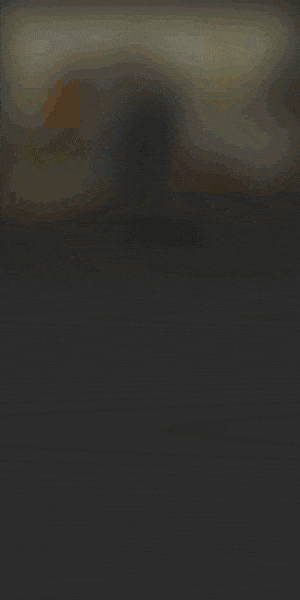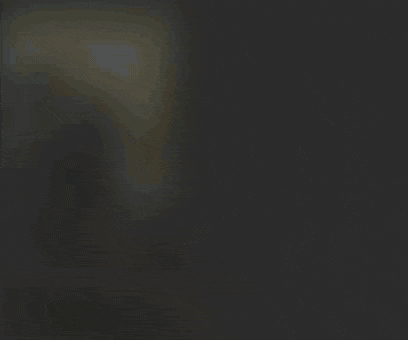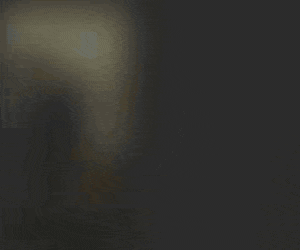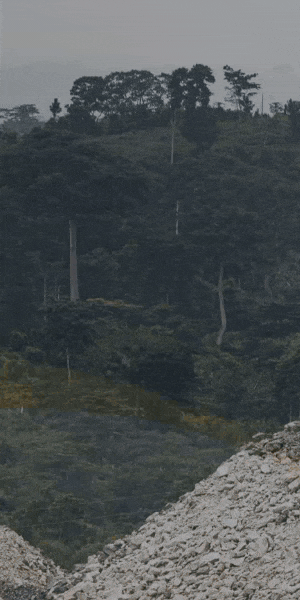Cabral Gold Reports High-Grade Drill Results at PDM Target in Brazil's Cuiú Cuiú District

Cabral Gold drills 23m at 4.7 g/t gold at PDM target, identifying four parallel mineralized zones beneath oxide blanket at Cuiú Cuiú district in Brazil.
- Cabral Gold has intersected 23.3 meters grading 4.7 g/t gold at its Pau de Merena target, located 2.5 kilometers northwest of the Central gold deposit within the Cuiú Cuiú district in Brazil.
- The mineralized zone in diamond drill hole DDH346 included two high-grade intervals of 1 meter at 91.3 g/t gold and 1.1 meters at 8.1 g/t gold, with the zone remaining open at depth and along strike.
- Recent drilling at PDM has expanded the gold-in-oxide blanket surface area by 50 percent from 0.26 square kilometers to 0.39 square kilometers and confirmed four northwest-trending parallel mineralized zones in underlying intrusive rocks.
- The company recently announced US$45 million in construction financing for Phase 1 operations targeting heap leach processing of near-surface oxide material at three deposits, though PDM was not included in the prefeasibility study.
- Cabral Gold holds 100 percent interest in the Cuiú Cuiú gold district with NI 43-101 compliant resources totaling 450,200 ounces of indicated gold in fresh basement material and 216,182 ounces in oxide material.
Cabral Gold Inc. (TSXV: CBR) (OTCQB: CBGZF) is a Vancouver-based junior resource company focused on the exploration and development of gold properties in Brazil. The company holds a 100 percent interest in the Cuiú Cuiú gold district located in the Tapajós Region within Pará state in northern Brazil. Three main gold deposits have been defined at the project, containing National Instrument 43-101 compliant Indicated resources of 12.29 million tonnes grading 1.14 g/t gold for 450,200 ounces in fresh basement material and 13.56 million tonnes at 0.50 g/t gold for 216,182 ounces in oxide material. The project also contains Inferred resources of 13.63 million tonnes at 1.04 g/t gold for 455,100 ounces in fresh basement material and 6.4 million tonnes grading 0.34 g/t gold for 70,569 ounces in oxide material.
Latest Drill Results from PDM Target
Cabral Gold has reported results from diamond drill hole DDH346 at the Pau de Merena target, which is situated 2.5 kilometers northwest of the Central gold deposit. The hole intersected 23.3 meters grading 4.7 g/t gold from 57 meters depth in hard rock below the gold-in-oxide blanket. Within this broader intercept, the company identified two particularly high-grade zones: 1 meter at 91.3 g/t gold and 1 meter at 8.1 g/t gold.
The drill hole was completed on section 9346907N at an angle of 60 degrees with an azimuth of 227 degrees. The hole was designed to test the down-dip continuation of mineralization previously intersected in DDH237, which had returned 1.3 meters at 1.9 g/t gold and 2 meters at 2.4 g/t gold. In addition to the main intercept, DDH346 also returned 8 meters at 0.3 g/t gold within the colluvial blanket, 3 meters at 1.2 g/t gold from 92 meters depth, and 1.6 meters at 0.6 g/t gold from 114 meters depth.
The mineralization occurs in hydrothermal breccia with intense quartz-sulfide veining within highly altered fractured granite intrusive rock. The mineralized zone remains open at depth and along strike, suggesting potential for resource expansion through additional drilling.
Geological Context & Target Expansion
The PDM target is located within a prominent northwest-trending gold-in-soil anomaly exceeding 0.1 g/t that has been traced for more than 5 kilometers along strike and remains open. This trend encompasses several significant targets and deposits, including Central, Central SE, Central North, PDM, and Mutum.
Alan Carter, Cabral's President and CEO, stated:
"The results from diamond drill hole DDH346 at the PDM target at Cuiú Cuiú highlight the presence of several very high-grade structures in the intrusive rocks below the gold-in-oxide blanket at PDM. These four discrete structures remain open along strike and down-dip."
Recent drilling has significantly expanded the known extent of mineralization at PDM. The surface area of the gold-in-oxide mineralized blanket has grown by 50 percent from 0.26 square kilometers to 0.39 square kilometers. Additionally, the company has confirmed the existence of four northwest-trending parallel mineralized zones in the underlying granitic intrusive rocks.
The mineralized zone intercepted in DDH346 is believed to be the strike extension of the zone intersected in DDH22, which returned 8.5 meters at 5.1 g/t gold including 0.7 meters at 30.4 g/t gold. The new results suggest that grades may be increasing with depth on section 9346907N at PDM and indicate the presence of narrow zones of higher-grade mineralization that may be continuous within the underlying intrusive rocks.
Previous Drilling Success at PDM
The current results build on a track record of successful drilling at the PDM target. Previous diamond drill holes in granitic basement rocks below the gold-in-oxide blanket have returned significant intercepts. DDH239 intersected 22.4 meters at 4.8 g/t gold, including 1.35 meters at 62.0 g/t gold, as well as 11.9 meters at 3.3 g/t gold, including 0.5 meters at 16.1 g/t gold and 1.2 meters at 16.0 g/t gold. DDH275 returned 18.0 meters at 2.5 g/t gold from 92.0 meters depth, including 3.0 meters at 10.5 g/t gold.
These higher-grade intercepts occur within brecciated structural zones and mostly remain open at depth and along strike, indicating potential for continued resource expansion. The consistent intersection of mineralization across multiple drill holes suggests a robust geological system with continuity of mineralization.
Carter noted:
"Whilst a significantly larger gold-in-oxide blanket occurs at PDM than previously envisaged, there is increasing evidence of down-dip and along strike continuity of the four known zones of primary mineralization within the intrusive rocks below the gold-in-oxide blanket."
Integration with Development Plans
The latest drill results follow Cabral's recent announcement of US$45 million in construction financing for Phase 1 operations at Cuiú Cuiú. This initial phase targets heap leach processing of near-surface gold-in-oxide material at the MG, Machichie Main, and Central gold deposits. The oxide material at PDM was not included in the prefeasibility study underlying this financing.
Carter commented on the relationship between the new results and the company's development timeline:
"These drill results come soon after last week's announcement of the US$45 million construction financing for the Phase 1 operation at Cuiú Cuiú which is aimed at the heap leach processing of the near surface gold-in-oxide material at the MG, Machichie Main and Central gold deposits at Cuiú Cuiú."
The CEO emphasized the implications for future resource expansion:
"The oxide material at PDM was not part of this PFS study but these results and more recent drilling at PDM in both the oxide material and the underlying intrusive rocks, augers well for expansion of the global resource base at Cuiú Cuiú."
The objective of the current drill program at PDM is twofold: to add ounces to the current gold-in-oxide resource base and to calculate an initial resource estimate for the mineralized zones in the underlying primary intrusive rocks. Additional drilling is planned to determine the size of the hard rock gold resource at PDM.
Mineralization Style & District Potential
The mineralization at PDM shares characteristics with other deposits within the Cuiú Cuiú district. Continuous zones of higher-grade mineralization are frequently surrounded by lower-grade envelopes, a pattern that has also been identified at the MG and Central gold deposits as well as at the Machichie Main, Machichie NE, and Jerimum Cima discoveries.
The Cuiú Cuiú project is located within the Tapajós Gold Province, which was the site of the largest gold rush in Brazil's history. According to the ANM (Agência Nacional de Mineração), the province produced an estimated 30 to 50 million ounces of placer gold between 1978 and 1995. Cuiú Cuiú itself was the largest area of placer workings in the Tapajós and historically produced an estimated 2 million ounces of placer gold.
This historical production demonstrates the gold endowment of the district and suggests significant potential for hard rock deposits that served as the source for the extensive placer workings. The identification of multiple parallel mineralized zones at PDM and their potential continuity with adjacent targets indicates a large-scale mineralizing system.
Ongoing Exploration Activities
Cabral continues to advance exploration across multiple targets within the Cuiú Cuiú district. Drill results are pending on the Mutum and Machichie NE targets, while diamond drilling is currently in progress at the Machichie Main and Jerimum Cima targets. This multi-target approach allows the company to test several prospective areas simultaneously and potentially identify additional resources.
The company's systematic exploration strategy focuses on both oxide and hard rock mineralization. The near-surface oxide material provides a lower-cost processing opportunity through heap leaching, while the underlying hard rock mineralization offers potential for higher-grade resources that could extend mine life and improve project economics.
Carter highlighted the significance of PDM's location:
"Additional drilling is planned to determine the size of the hard rock gold resource at PDM, which is located only 2.5km northwest of the Central gold deposit."
The proximity of PDM to the Central deposit provides potential infrastructure synergies and could allow for integrated development across multiple deposits within the district.
Investment Considerations
For investors evaluating Cabral Gold, several factors warrant consideration. The company has secured construction financing for its Phase 1 operations, marking a transition from pure exploration to development. The initial focus on heap leach processing of oxide material provides a relatively lower-risk path to production with reduced capital requirements compared to conventional milling operations.
The latest drill results at PDM demonstrate continued exploration success and the potential for resource expansion beyond the deposits included in the current development plan. The identification of four parallel mineralized zones with continuity at depth and along strike suggests a substantial geological system that could support longer-term mining operations.
The company's 100 percent ownership of the Cuiú Cuiú district provides exposure to a historically productive gold region without the complications of joint venture arrangements. The existing resource base of over 1.1 million ounces combined (Indicated and Inferred, oxide and fresh rock) provides a foundation for development, while ongoing exploration offers potential for organic growth.
However, investors should consider that Cabral remains a junior mining company with associated risks including execution risk on the Phase 1 development, permitting requirements, commodity price exposure, and the need for continued capital to advance both development and exploration activities. The company operates in Brazil, which presents both opportunities through established mining infrastructure and challenges related to regulatory and political considerations.
The true widths of mineralized intercepts may be approximately 50 percent of reported drill intercepts, and investors should account for this geometric consideration when evaluating the significance of drilling results. Additionally, while historical placer production demonstrates gold endowment, it does not guarantee the economic viability of hard rock deposits.
For Investors
Cabral Gold's latest drill results at the PDM target demonstrate continued exploration success within the Cuiú Cuiú gold district. The intersection of 23.3 meters grading 4.7 g/t gold, including high-grade intervals exceeding 90 g/t, confirms the presence of significant mineralization in hard rock below the oxide blanket. The identification of four parallel mineralized zones that remain open at depth and along strike provides multiple vectors for resource expansion. With construction financing secured for Phase 1 operations and ongoing exploration across multiple targets, Cabral Gold offers investors exposure to both near-term development and longer-term exploration upside in a historically productive gold district in Brazil. The company's systematic approach to advancing both oxide and hard rock resources positions it to potentially expand its asset base while progressing toward production.
Analyst's Notes




Subscribe to Our Channel
Stay Informed



































